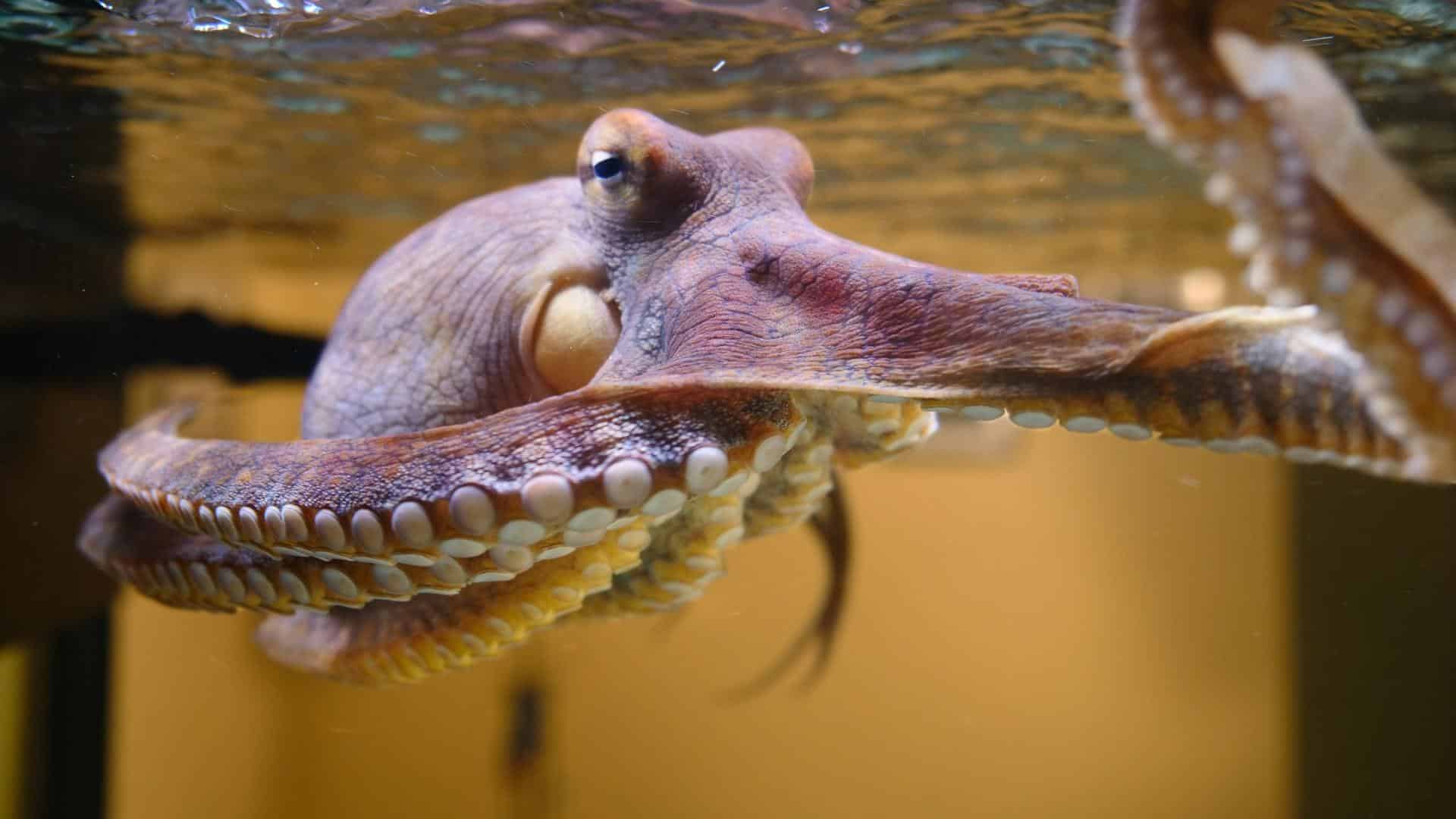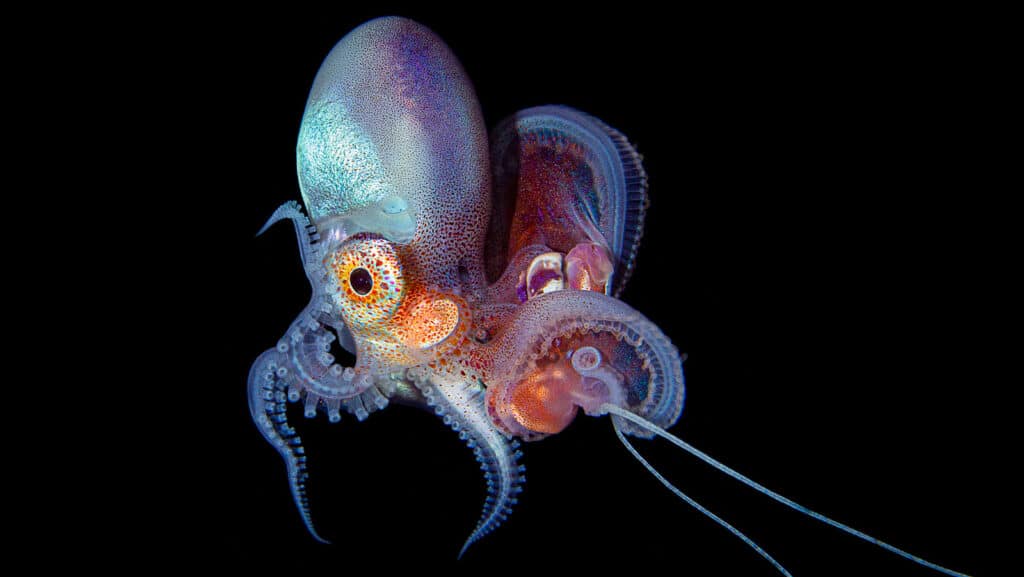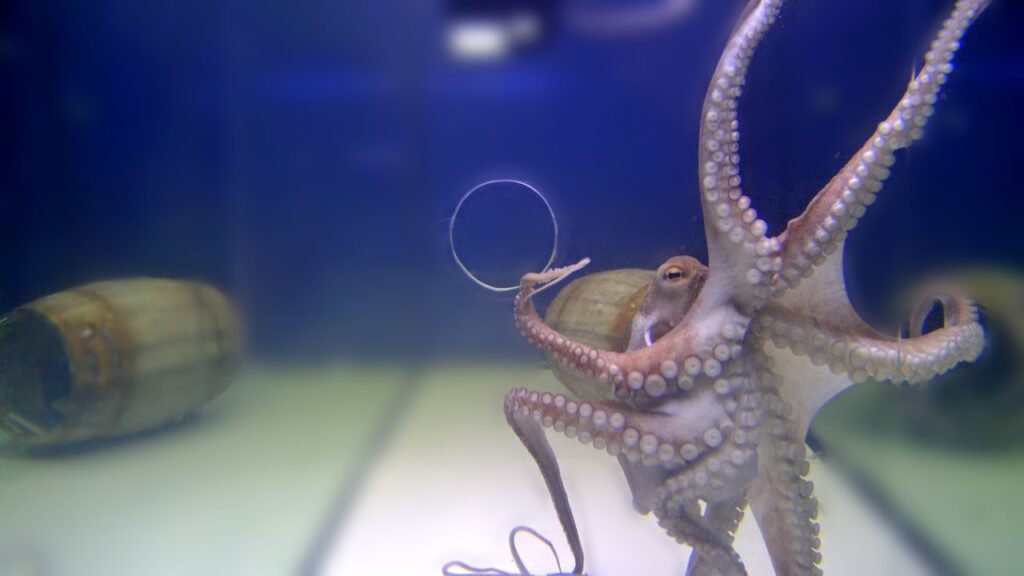How Small Of A Hole Can An Octopus Fit Through

Introduction
How Small Of A Hole Can An Octopus Fit Through: The octopus, a creature of intrigue and fascination in the marine world, boasts an extraordinary ability that continues to astound scientists and enthusiasts alike: its uncanny capacity to squeeze through unbelievably small openings. This enigmatic mollusk, known for its intelligence and adaptability, challenges our understanding of the limits of flexibility and dexterity in the animal kingdom.
In this exploration, we delve into the remarkable world of octopuses and their penchant for contortion. We seek answers to the intriguing question: Just how small of a hole can an octopus fit through? To comprehend this astonishing feat, we embark on a journey that uncovers the anatomical marvels and behavioral strategies that enable octopuses to navigate through tight spaces.
Through a combination of scientific research, firsthand accounts, and captivating anecdotes, we aim to shed light on the astounding adaptability of these creatures. Their unique boneless bodies, equipped with an array of suckers and an exceptionally agile mantle, make them masters of escape and evasion, allowing them to access hidden crevices and evade predators with ease.

Can octopus go through small holes?
They are known for their ability to squeeze through any small hole or opening. They have often been recorded escaping from fishing boats or aquariums through extremely tiny openings. Even giant octopuses have tried to squeeze their way out of an aquarium.
Octopuses possess a remarkable ability to navigate through surprisingly small openings, a skill that often leaves observers astounded. Their boneless bodies and extraordinary flexibility allow them to squeeze through holes, crevices, and openings that appear impossibly tight for their size. This astonishing feat is made possible by their unique anatomy, featuring no rigid skeletal structure and a highly flexible mantle surrounding their bodies. Equipped with an array of powerful and dexterous suckers, octopuses can manipulate their shape and size to fit through tight spaces with remarkable ease.
Their ability to traverse small holes is not only a means of escape from predators but also a strategy for hunting and foraging in complex underwater environments. Octopuses can hunt in the narrowest of crevices, where other animals cannot reach, giving them an advantage in securing prey and avoiding threats.
This remarkable skill showcases the adaptability and intelligence of octopuses, reinforcing their status as some of the ocean’s most enigmatic and awe-inspiring inhabitants. It is a testament to the incredible diversity of life in the seas and underscores the need to continue studying and protecting these remarkable creatures and their habitats.
What size must the hole be for the octopus to go through?
The octopus can squeeze through tiny gaps; even the larger species can pass through an opening close to 2.5 cm (1 in) in diameter.
The size of the hole an octopus can pass through largely depends on the specific octopus’s size, flexibility, and determination. Octopuses are incredibly adaptable creatures, and their bodies can contort to fit through openings that seem much smaller than their overall size. As a general rule of thumb, an octopus can squeeze through any hole that is larger than its beak, which is the rigid, parrot-like structure at the center of its tentacles.
However, octopuses have been known to surprise researchers and observers by fitting through holes that appear much smaller than their beaks, thanks to their ability to compress their bodies and squeeze through tight spaces. This adaptability varies among octopus species, with some being more flexible than others.
Moreover, an octopus’s determination and motivation can play a significant role in its ability to navigate through small openings. When escaping from a predator or pursuing prey, an octopus can exhibit remarkable feats of contortion to achieve its goal.
The size of the hole an octopus can go through is a fascinating testament to the creature’s exceptional flexibility and problem-solving abilities, and it showcases just how resourceful these marine animals can be in their underwater environments.
Does octopus have holes?
Octopuses are cephalopods, which have separate anal and oral openings. Indeed, descriptions of the cephalopod GI tract clearly depict an anal opening.
Octopuses do not have holes in the traditional sense like openings or cavities in their bodies. Instead, they have a complex anatomy designed for life in the ocean. Octopuses possess a soft, pliable body with no rigid skeletal structure, which allows them to be highly adaptable and flexible. Their main body, or mantle, houses various organs such as the heart, gills, and digestive system.
One feature that might be mistaken for a “hole” is the octopus’s siphon, also known as a funnel. The siphon is a tubular structure located on the underside of the mantle, and it serves several essential functions. It expels water forcefully to propel the octopus in a jet-like manner for locomotion and can also help in expelling waste products, such as ink, as a defense mechanism.
When people refer to octopuses going through “holes,” they are usually describing the remarkable ability of octopuses to squeeze their bodies through tight spaces and crevices in their aquatic environments. Octopuses can manipulate their shape and size, thanks to their flexible bodies and countless suckers, allowing them to navigate through narrow openings and cracks in rocks or coral reefs.
How small of a hole can octopus fit through?
Even giant octopuses have tried to squeeze their way out of an aquarium. Arnold, the big octopus in this video, has already displayed his wild squeezing skills in the past. During his previous squeeze challenge, The Amazing Arnold, king of all cephalopods, managed to fit through an opening as small as two centimeters.
The size of the hole that an octopus can fit through is a subject of fascination and amazement among researchers and marine enthusiasts. Octopuses possess an astonishing ability to squeeze through openings that seem impossibly small for their size.
While there is no precise measurement to determine the smallest hole an octopus can fit through, it largely depends on the species, age, and overall size of the octopus, as well as its level of determination. As a general guideline, an octopus can often pass through any opening that is larger than its beak, which is a hard, parrot-like structure found at the center of its tentacles.
However, octopuses are known for their remarkable adaptability. They can significantly compress their bodies, elongate their arms, and manipulate their shape to fit through surprisingly tight spaces. This extraordinary flexibility allows them to navigate intricate underwater environments, find shelter from predators, and access hidden prey.
In essence, the size of the hole an octopus can fit through is a testament to the creature’s unparalleled adaptability and problem-solving abilities, making them some of the most versatile and intriguing inhabitants of the ocean. Their capacity to defy expectations and traverse through tight spaces adds to their mystique in the world of marine biology.
What allows the octopus to fit into almost any small opening?
The octopus can also squeeze through any hole that’s not smaller than its beak, the only hard part of its body.
The octopus possesses a remarkable set of adaptations that enable it to fit into almost any small opening, showcasing its incredible versatility and problem-solving abilities in the underwater world.
First and foremost, the absence of a rigid internal or external skeleton is a key factor. Unlike many other animals, octopuses have soft, pliable bodies primarily composed of muscle. This allows them to change their shape and size dramatically, making it possible to squeeze through tight spaces without the constraints of bones.
Additionally, the octopus’s mantle, the main body part housing its vital organs, is highly flexible. This allows the creature to elongate and compress its body as needed to fit through narrow openings. The mantle can expand to accommodate larger spaces or contract to navigate through smaller gaps.
Perhaps the most distinctive feature aiding in this ability is the octopus’s countless suckers covering its tentacles. These suckers not only provide exceptional grip but also allow the octopus to manipulate objects and surfaces with incredible dexterity. When encountering an opening, the octopus can use its suckers to anchor itself while it shifts and contorts its body to pass through.
The unique combination of a boneless body, a flexible mantle, and highly adaptive suckers grants the octopus the extraordinary capability to fit into nearly any small opening it encounters, making it a true marvel of marine biology.
What is the purpose of an octopus fitting through small holes?
The purpose of an octopus fitting through small holes is multifaceted and serves several essential functions in its underwater life.
- Escape from Predators: Octopuses have numerous natural predators in the ocean, ranging from larger fish to seals and sharks. Fitting through small holes provides them with an escape strategy. When threatened, an octopus can swiftly retreat into a narrow crevice or hide in the recesses of coral reefs, where their pursuers cannot follow. Their flexibility and ability to disappear into tight spaces are crucial for survival.
- Hunting and Foraging: Octopuses are carnivorous and hunt various prey, including crustaceans and fish. Small holes and crevices often harbor potential meals. Their ability to squeeze into these spaces allows them to access hidden prey that other predators cannot reach, giving them a distinct advantage in finding food.
- Shelter and Protection: Besides predators, the ocean presents various environmental challenges, such as strong currents and changing water conditions. Octopuses can seek shelter in small openings to avoid these disturbances, ensuring their safety and reducing the energy expended in maintaining their position.
- Reproduction: Some octopus species lay their eggs in crevices or small openings to protect them from potential threats. The ability to access and utilize such spaces is vital for safeguarding their offspring during the incubation period.
In essence, an octopus’s capacity to fit through small holes is a versatile and essential survival strategy that aids in evasion, hunting, shelter, and reproduction. It underscores the adaptability and resourcefulness of these remarkable creatures in their complex underwater habitats.
Are there any limitations to how small a hole an octopus can fit through?
While octopuses are incredibly flexible and adept at squeezing through small openings, there are limitations to how small a hole they can fit through.
- Size and Species Variation: The size of the hole an octopus can navigate through is closely related to the individual octopus’s size and species. Smaller octopuses can fit through smaller openings than larger ones. Additionally, different species may have varying levels of flexibility, which can influence their ability to pass through tight spaces.
- Rigidity of the Opening: The physical characteristics of the hole matter. If the opening is rigid or lacks any flexibility, it may be impossible for an octopus to pass through, no matter how small it is. Octopuses rely on their ability to change the shape of their bodies to navigate through openings.
- Behavior and Motivation: An octopus’s determination and motivation can play a significant role in whether it attempts to fit through a particular hole. When escaping from a predator or pursuing prey, an octopus can exhibit remarkable feats of contortion, seemingly pushing the boundaries of its flexibility.
- Risk and Safety: Octopuses are highly intelligent and cautious creatures. They are unlikely to attempt to pass through a hole that they perceive as too risky or potentially harmful. Their instincts for self-preservation may override their natural flexibility.
While octopuses possess exceptional flexibility and adaptability, there are indeed limitations to how small a hole they can fit through. These limitations are influenced by size, species, the rigidity of the opening, behavior, and the perception of risk, all of which interact to determine whether an octopus will attempt to navigate a particular small space.
Do octopuses have any other remarkable adaptations related to their flexibility?
Octopuses possess a plethora of remarkable adaptations beyond their unparalleled flexibility. One of the most astonishing features is their exceptional camouflage abilities. Octopuses can change the color, pattern, and even the texture of their skin within seconds, allowing them to blend seamlessly with their surroundings. This camouflage serves multiple purposes, from hunting prey to avoiding predators.
Octopuses are incredibly intelligent creatures. They have complex nervous systems and can solve intricate puzzles, open containers, and even display a degree of tool use. Their problem-solving abilities are a testament to their adaptability and cognitive prowess.
Another intriguing adaptation is their remarkable ability to regenerate lost limbs. If an octopus loses an arm due to injury or predation, it can regenerate a new one, complete with all the necessary functions. This regenerative capacity not only aids in survival but also showcases their incredible resilience.
In addition, octopuses possess highly developed senses, particularly vision and touch. Their large, sensitive eyes enable them to perceive a wide range of colors and detect polarized light, granting them a unique perspective in the underwater world.
These adaptations, combined with their flexibility, make octopuses one of the most fascinating and adaptable creatures in the animal kingdom, allowing them to thrive in diverse and challenging environments.

Conclusion
Our journey into the world of octopuses and their remarkable ability to fit through astonishingly small holes has been nothing short of fascinating. We find ourselves in awe of these intelligent and adaptable creatures.
Octopuses, with their boneless bodies, agile mantles, and hundreds of suckers, have demonstrated a level of flexibility that stretches the boundaries of what we thought was possible in the animal kingdom. Through a combination of physical prowess and incredible problem-solving abilities, they navigate through tight spaces, eluding predators and seeking out hidden prey.
The question of just how small a hole an octopus can fit through has no definitive answer, as it depends on the individual octopus’s size, age, and determination. Nevertheless, the anecdotes and scientific studies we’ve encountered along this journey reveal the astonishing range of sizes and shapes they can contort themselves into.
Our exploration serves as a testament to the wonders of nature. It underscores the importance of protecting our oceans and preserving the habitats of these remarkable creatures, ensuring that future generations can continue to marvel at the mysteries of the deep sea.
As we leave this inquiry behind, we are left with a profound appreciation for the octopus, a creature that reminds us that the natural world is full of surprises and that there is always more to learn and discover beneath the waves.



